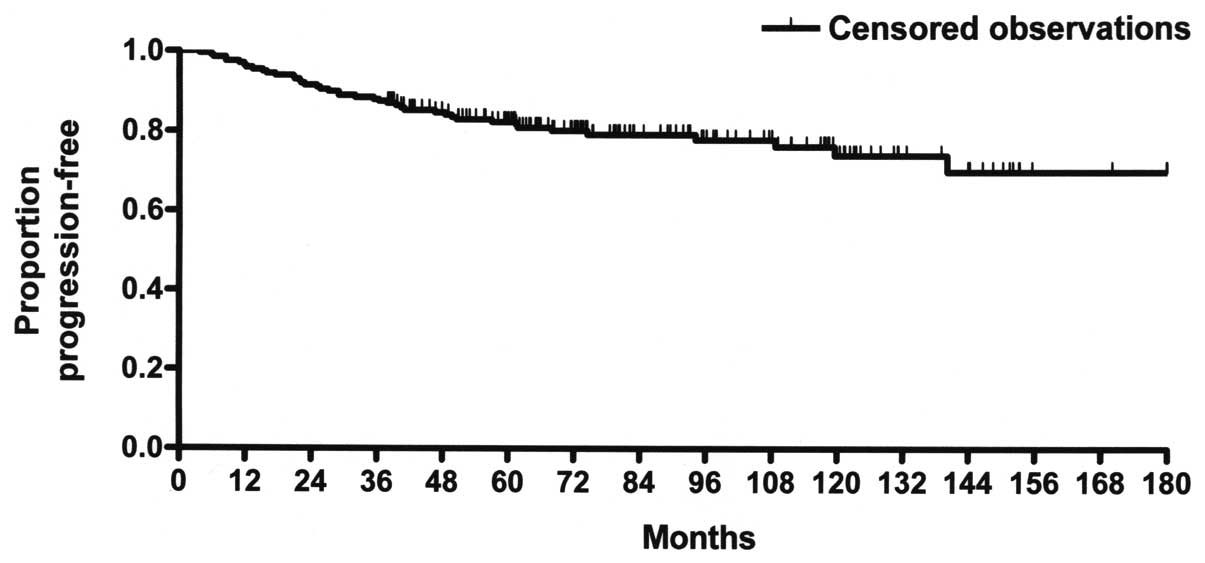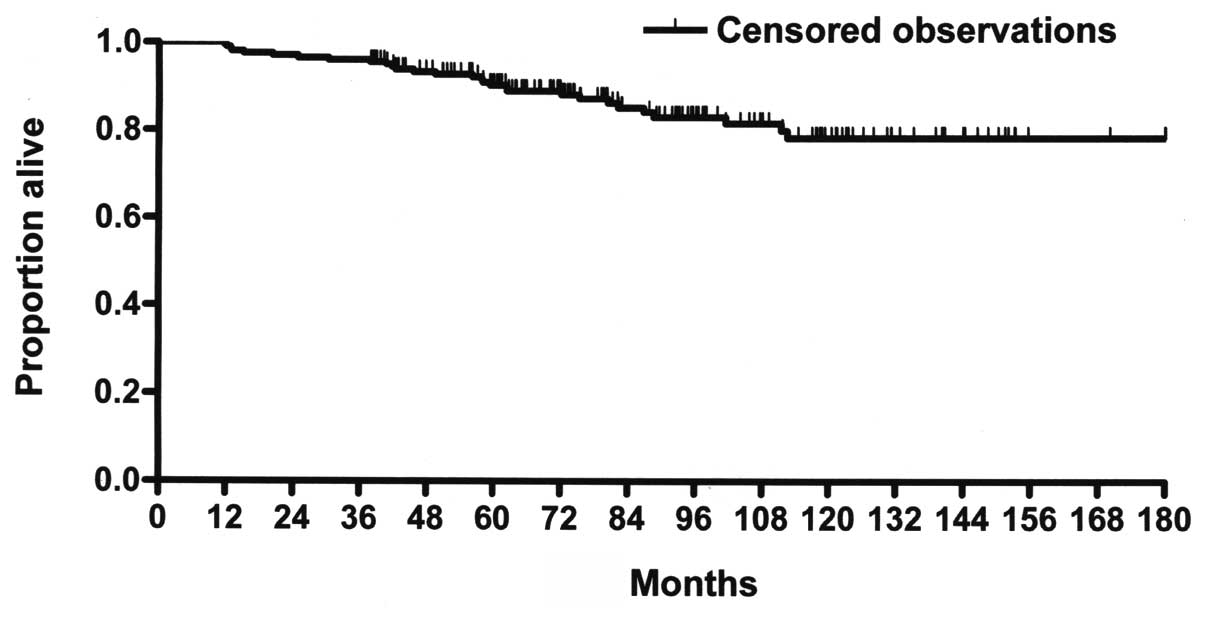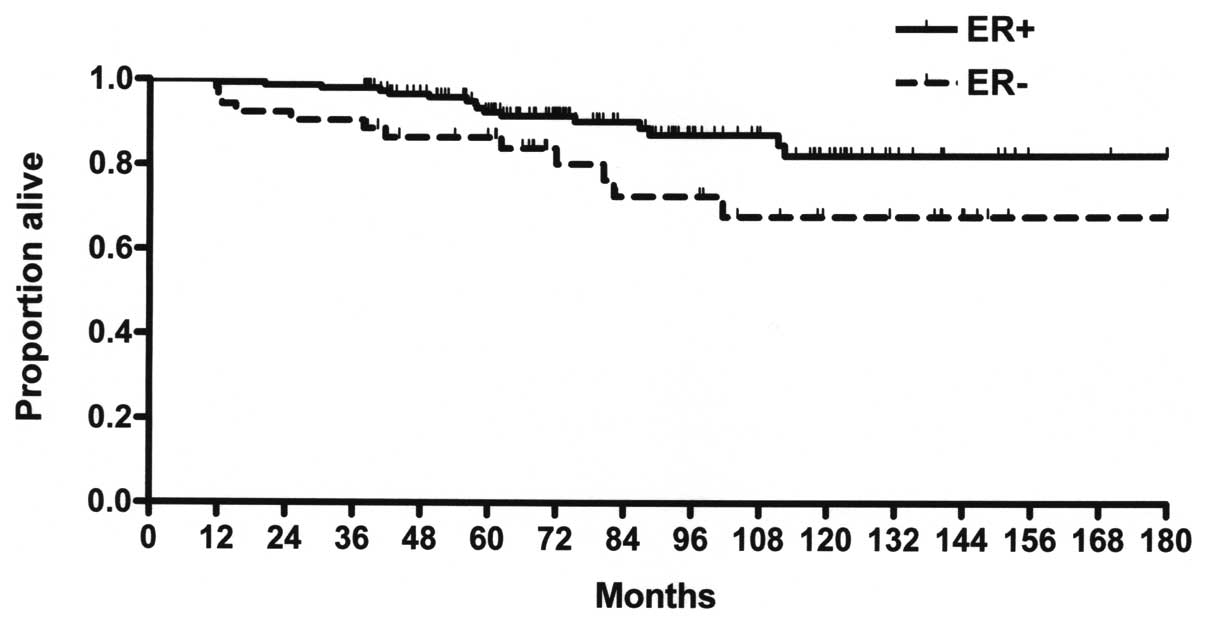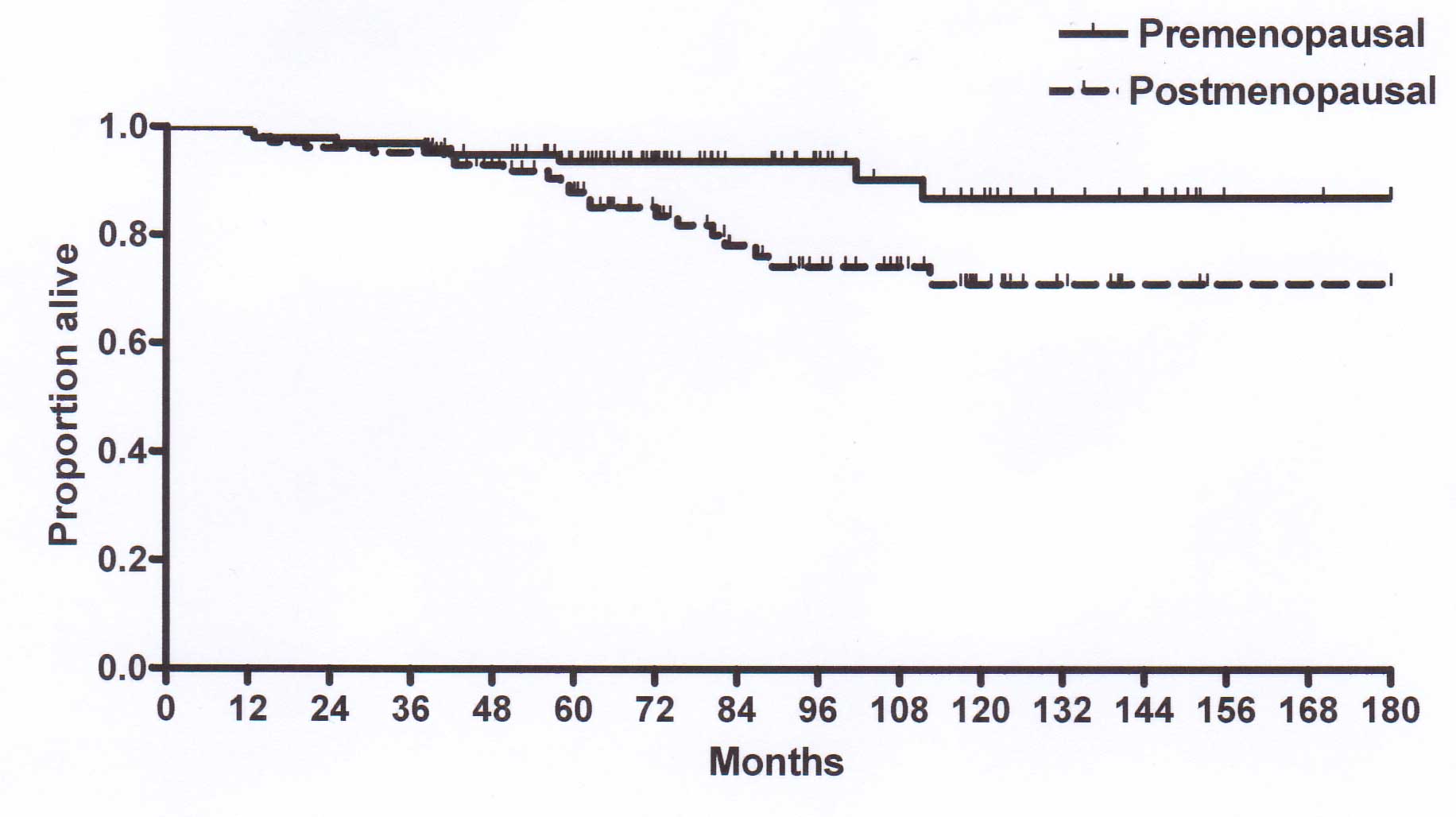|
1.
|
Veronesi U, Cascinelli N, Mariani L, Greco
M, Saccozzi R, Luini A, Aguilar M and Marubini E: Twenty-year
follow-up of a randomized study comparing breast-conserving surgery
with radical mastectomy for early breast cancer. N Engl J Med.
347:1227–1232. 2002.PubMed/NCBI
|
|
2.
|
Fisher B, Anderson S, Bryant J, Margolese
RG, Deutsch M, Fisher ER, Jeong JH and Wolmark N: Twenty year
follow-up of a randomized trial comparing total mastectomy,
lumpectomy, and lumpectomy plus irradiation for the treatment of
invasive breast cancer. N Engl J Med. 347:1233–1241.
2002.PubMed/NCBI
|
|
3.
|
Early Breast Cancer Trialists’
Collaborative Group (EBCTCG): Effects of chemotherapy and hormonal
therapy for early breast cancer on recurrence and 15-year survival:
an overview of the randomised trials. Lancet. 365:1687–1717.
2005.PubMed/NCBI
|
|
4.
|
Early Breast Cancer Trialists’
Collaborative Group (EBCTCG); Peto R, Davies C, Godwin J, et al:
Comparisons between different polychemotherapy regimens for early
breast cancer: meta-analyses of long-term outcome among 100,000
women in 123 randomised trials. Lancet. 379:432–444. 2012.
View Article : Google Scholar : PubMed/NCBI
|
|
5.
|
Darby SC, Ewertz M, McGale P, et al: Risk
of ischemic heart disease in women after radiotherapy for breast
cancer. N Engl J Med. 368:987–998. 2013. View Article : Google Scholar : PubMed/NCBI
|
|
6.
|
Recht A, Come SE, Gelman RS, et al:
Integration of conservative surgery, radiotherapy, and chemotherapy
for the treatment of early-stage, node-positive breast cancer:
sequencing, timing, and outcome. J Clin Oncol. 9:1662–1667.
1991.PubMed/NCBI
|
|
7.
|
Toledano A, Azria D, Garaud P, Fourquet A,
Serin D, Bosset JF, Miny-Buffet J, Favre A, Le Floch O and Calais
G: Phase III trial of concurrent or sequential adjuvant
chemoradiotherapy after conservative surgery for early-stage breast
cancer: final results of the ARCOSEIN trial. J Clin Oncol.
25:405–410. 2007. View Article : Google Scholar
|
|
8.
|
Early Breast Cancer Trialists’
Collaborative Group (EBCTCG); Darby S, McGale P, Correa C, et al:
Effect of radiotherapy after breast-conserving surgery on 10-year
recurrence and 15-year breast cancer death: meta-analysis of
individual patient data for 10,801 women in 17 randomised trials.
Lancet. 378:1707–1716. 2011.
|
|
9.
|
Rodenhuis S, Bontenbal M, Beex LV, et al:
High-dose chemotherapy with hematopoietic stem-cell rescue for
high-risk breast cancer. N Engl J Med. 349:7–16. 2003. View Article : Google Scholar : PubMed/NCBI
|
|
10.
|
Recchia F, Nuzzo A, Lalli A, De Filippis S
and Torchio P: Activity of standard-dose carboplatin,
cyclophosphamide, and etoposide in patients with metastatic breast
cancer with previous exposure to anthracyclines. Am J Clin Oncol.
20:166–168. 1997. View Article : Google Scholar : PubMed/NCBI
|
|
11.
|
Recchia F, De Fillipis S, Piccinini M and
Rea S: High-dose carboplatin, cyclophosphamide, etoposide with
hematological growth factors, without stem cell support in patients
with advanced cancer. Anticancer Res. 23:4141–4147. 2003.PubMed/NCBI
|
|
12.
|
Recchia F, Saggio G, Amiconi G, Di Blasio
A, Cesta A, Candeloro G and Rea S: Gonadotropin-releasing hormone
analogues added to adjuvant chemotherapy protect ovarian function
and improve clinical outcomes in young women with early breast
carcinoma. Cancer. 106:514–523. 2006. View Article : Google Scholar
|
|
13.
|
Recchia F, Candeloro G, Desideri G,
Necozione S, Recchia CO, Cirulli V and Rea S: Triple-negative
breast cancer: multipronged approach, single-arm pilot phase II
study. Cancer Med. 1:89–95. 2012. View
Article : Google Scholar : PubMed/NCBI
|
|
14.
|
Simon R: Confidence intervals for
reporting results of clinical trials. Ann Intern Med. 105:429–435.
1986. View Article : Google Scholar : PubMed/NCBI
|
|
15.
|
Kaplan EL and Meyer P: Nonparametric
estimation from incomplete observation. J Am Stat Assoc.
53:457–481. 1958. View Article : Google Scholar
|
|
16.
|
Cox DR: Regression models and Life-Tables.
J R Stat Soc. 34:187–220. 1972.
|
|
17.
|
Hartsell WF, Recine DC, Griem KL and
Murthy AK: Delaying the initiation of intact breast irradiation for
patients with lymph node positive breast cancer increases the risk
of local recurrence. Cancer. 76:2497–2503. 1995. View Article : Google Scholar : PubMed/NCBI
|
|
18.
|
Buchholz TA, Austin-Seymour MM, Moe RE,
Ellis GK, Livingston RB, Pelton JG and Griffin TW: Effect of delay
in radiation in the combined modality treatment of breast cancer.
Int J Radiat Oncol Biol Phys. 26:23–35. 1993. View Article : Google Scholar : PubMed/NCBI
|
|
19.
|
Hickey BE, Francis DP and Lehman M:
Sequencing of chemotherapy and radiotherapy for early breast
cancer. Cochrane Database Syst Rev. 4: View Article : Google Scholar
|
|
20.
|
Moebus V, Jackisch C, Lueck HJ, et al:
Intense dose-dense sequential chemotherapy with epirubicin,
paclitaxel, and cyclophosphamide compared with conventionally
scheduled chemotherapy in high-risk primary breast cancer: mature
results of an AGO phase III study. J Clin Oncol. 28:2874–2880.
2010. View Article : Google Scholar
|
|
21.
|
Recchia F, Candeloro G, Necozione S,
Desideri G, Cesta A, Recchia L and Rea S: Vascular endothelial
growth factor expression and T-regulatory cells in premenopausal
breast cancer. Oncol Lett. 5:1117–1122. 2013.PubMed/NCBI
|
|
22.
|
Eliassen AH, Missmer SA, Tworoger SS,
Spiegelman D, Barbieri RL, Dowsett M and Hankinson SE: Endogenous
steroid hormone concentrations and risk of breast cancer among
premenopausal women. J Natl Cancer Inst. 98:1406–1415. 2006.
View Article : Google Scholar : PubMed/NCBI
|



















